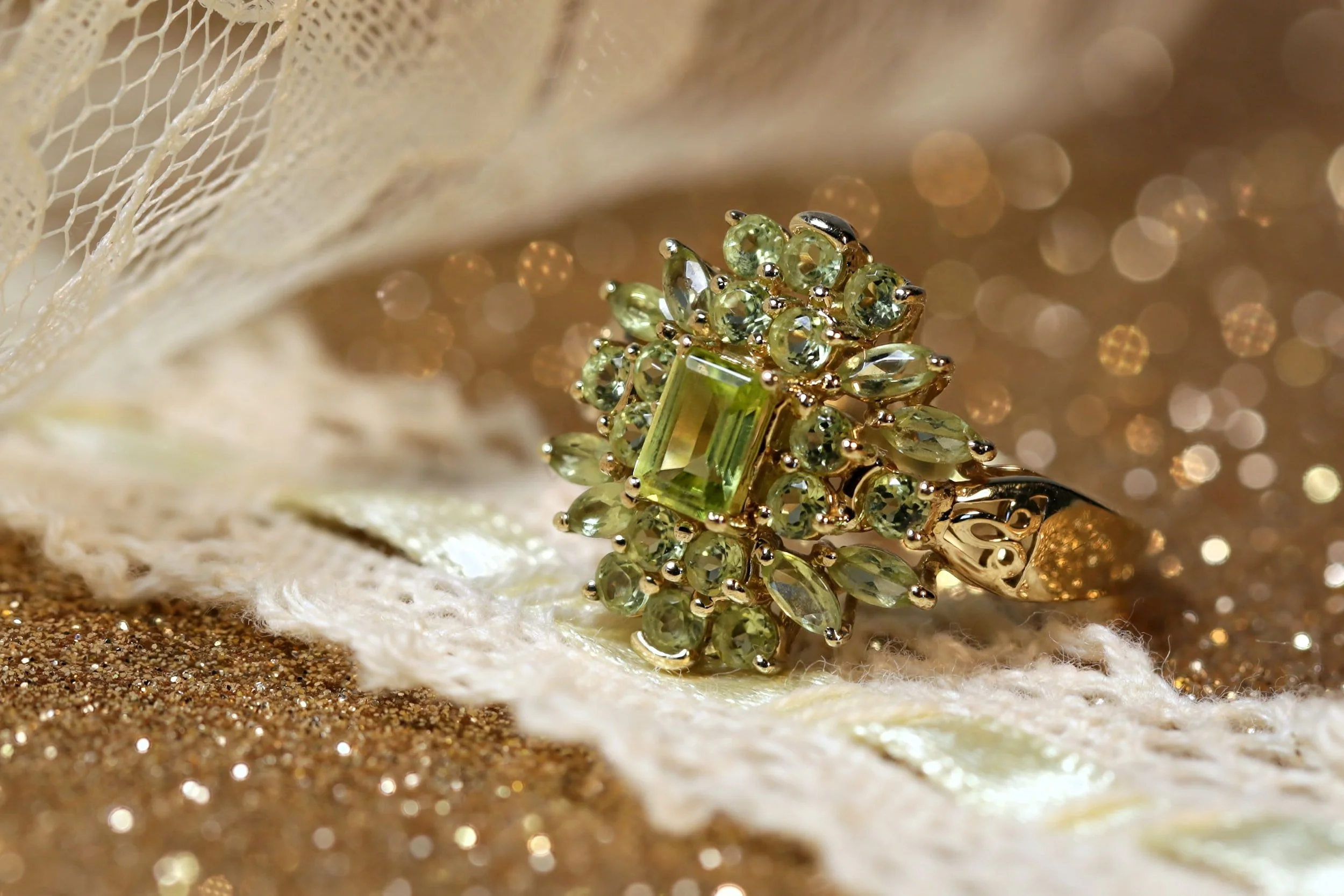Peridot: Always Green, Always Gorgeous!
Peridot is the name given to gem quality specimens of the mineral Olivine. This coveted gem has an immensely long history of being treasured by humans with several ancient cultures using this stone in their jewelry and objects of art. It is hypothesized that Cleopatra’s famed Emerald collection may have in fact been Peridot as there are many documented occasions throughout time where these two gemstones are confused with one another. Peridot gets its unique name from the Arabic word for “gem”. This gorgeously green gemstone is considered to be semi-precious and is celebrated as one of three birthstones of August.
With a hardness of around 6.5-7 on Mohs Scale of Hardness, Peridot is commonly used in jewelry in both faceted and cabochon forms. You will never see Peridot in any other color, it is always green to yellowish green due to the iron found in its chemical formula. This gem displays a moderate doubling effect that gives this material a beautiful glow due to its birefringence. Other stones which display doubling due to birefringence are Zircon and Sphene.
Peridot must be worn with care as this gemstone is sensitive and exposure to chemicals like pool water or other acidic compounds can eat away at the surface of Peridot causing etching that can cloud the stone and dull facet junctions. Peridot should never be cleaned in an ultra sonic cleaner because temperature changes may cause fracturing and hazing. If a Peridot is damaged by wear, acid exposure, or chipping it is possible to have that stone repaired by a lapidary who can re-polishing the stone. Peridot set in earrings, pendants, and brooches are more protected against damage than those set in rings. Protect your Peridot rings by removing them when doing dishes, showering, going to the pool, or doing physical work. Jewelry cleaning agents may damage the surface of Peridot gemstones so the best way to clean your Peridot jewelry is by hand with luke warm soapy water.
Peridot is one of the most interesting gemstones because of the many ways it can find its way to us. This stone can form in volcanic settings both by crystallizing on the inner walls of volcanos and in magma. Peridot can also form miles beneath Earth’s crust in the mantle before being brought up to the surface by tectonic events like continental plate collisions. It is in these metamorphic deposits that we find the largest gem quality Peridot. Additionally, we can find extraterrestrial Peridot in some meteorites that fall to earth. These meteorites are likely comprised of the the interior of planets that have since met their demise. We call these rare extraterrestrial Peridot specimens Pallasite.
Even though alien Peridot is extremely rare, this gemstone is definitely out of this world!


